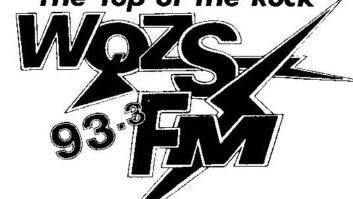Home-brew Dehydrator Upgrade
Apr 1, 2010 12:00 PM, By Mike Kernen
Tech Tips, April 2010
Compressor replacement
We all know that coaxial transmission line and antenna pressurization are critically important. When I was recently summoned to a transmitter site, I discovered our compressor and dryer packaged system would only maintain about 2psi on the line. This is just less than it typically should be. I turned the nitrogen bottle on and removed the compressor from service. My initial inspection of the compressors revealed very little, although I noticed that they coasted to a stop when powered off — as if under no load. I pulled the cylinder head expecting to find a broken reed valve, but was surprised to see that the piston ring seal was torn. Inspection of the other compressor in the unit exposed another failed piston ring. Subsequent inspection of other compressor/dryer packaged units around our facilities turned up the same issue. Time for some rebuild kits, right?
Unfortunately, the compressor units contained in the Andrew Dryline systems are made by a predecessor of Thomas Industries, which is in the process of moving and has allowed its parts inventories to dry up (no pun intended). Extensive searching proved these compressors to be rare and their parts even rarer. Rebuild kits from Andrew are priced somewhere north of $1,500 and include nearly every active part of the system. I clearly needed another solution.

The new compressor and refashioned drying system.
My Andrew Dryline systems worked so well for so long they were all but forgotten. The Dryline works to lower the dew point inside the coax by first adding dried compressed air then slowly releasing it. Repeating this process ensures that the new dry air will absorb any latent moisture while being slowly released. Andrew has designed its systems to provide a dew point of nearly -40 F.
Ordering new systems from Andrew would be the simplest answer, but economic factors being what they are forced me to seek a more economical solution. I didn’t need an entirely new system, I just needed a source of compressed air. I looked at alternative compressors.

Not just any compressor will do, of course. It must be an oil-free design so as to not mist oil into the airline. It must be priced affordably. The laboratory-grade compressors Andrew supply are super expensive and difficult to find. Air can accommodate more moisture as it is heated and air heats dramatically when it’s compressed. So, the lab compressors also require an air-to-air intercooler because a tank does not buffer their output temperature.
I found the $389 DeWalt D55168 with its 120V oil-free, maintenance-free pump and its 15-gallon tank fit the need perfectly. The new compressor took its place next to the rack frame that formerly housed the Andrew units. I removed the compressor’s stock quick release and fitted it with a MNPT-tubing connector. Next I needed to replicate the Andrew’s drying system, which is made up of a small water separator, a coalescing filter, a pair of check valves and membrane dryer called a Cactus. I was able to source all of the needed parts from Grainger save for the Cactus, which I determined was reusable. I planned to replace the Cactus for good practice but found that it cost very nearly $1,000. Andrew also has fashioned a nifty evaporative continuous draining system for the water and coalescing filter, which I felt no need to duplicate because my new filter has an auto drain.
I re-used the Andrew controls system. It simply keeps the pressure within a user-definable window and provides alarms via contact closures if pressure goes outside limits, if the compressor runs for too long, or if there is excessive humidity in the system. Pressure is slowly relieved by means of the system’s check valves that I harvested from our failed units. Rather than controlling the new DeWalt compressor I chose to let it cycle autonomously via its built-in pressure control, which keeps the tank between 180 and 210psi. The Andrew controller still connects to a solid-state relay, which now controls a three-way air valve. When energized, air flows from the tank. When de-energized pressure before the check valves is released and the auto-drain on the filters is allowed to open. I use the DeWalt’s built-in regulator to supply about 100psi to the filter system.
With this system, the line breathes as it did with Andrew’s Dryline system, but at a much more palatable cost. Simple, repairable and effective — total investment less than $750.
Kernen is the chief engineer of WCSX, WRIF and WMGC, Greater Media Detroit.
Do you have a tech tip?
Send it to us at
[email protected]
Submitted ideas maybe suitable to
earn SBE recertification points.












